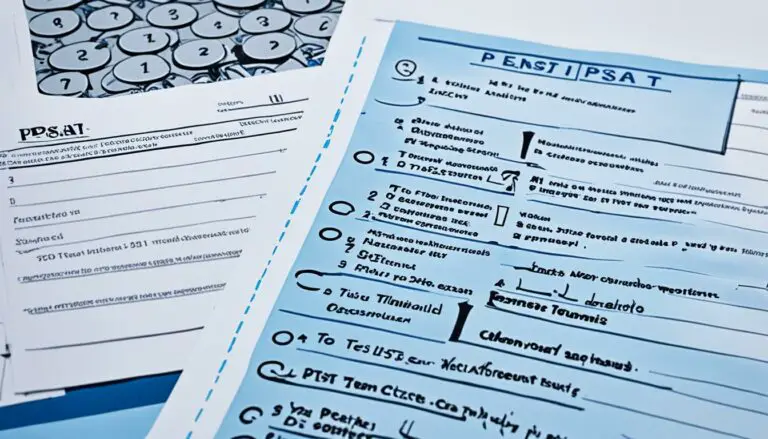Pros and Cons of Transferring High Schools: A Comprehensive Analysis
Transferring high schools can be challenging for many students and their families. It involves leaving behind familiar faces, adapting to a new environment, and potentially sacrificing extracurricular activities and academic progress.
However, transferring has potential benefits, such as the opportunity for a fresh start, access to new resources, and exposure to different perspectives.
A high school transfer is a student moving from one high school to another before completing their education. This can be due to various reasons, such as a family move, dissatisfaction with the current school, or a desire for a more challenging academic environment.
Students and their families must make an informed decision about transferring, weighing the potential pros and cons and considering the impact on their academic and personal goals.
Making an informed decision about transferring high schools is crucial to a successful transition. Researching potential schools, considering the impact on academic progress and extracurricular involvement, and communicating with current and prospective schools is essential.
Why Students Transfer
There are many reasons why students transfer to high schools. The most common reasons include personal, family relocation, and academic or social challenges.
Personal reasons can include a variety of factors, such as a desire for a different academic program, extracurricular activities, or a change in peer group. Students may also transfer due to a desire for a smaller or larger school environment.
Family relocation is another common reason for transferring to high schools. When families move to a new area, students may need to transfer to a new school. This transition can be difficult for students, mainly if they leave behind friends and familiar surroundings.
Academic or social challenges can also lead students to transfer to high schools. For example, a student may be struggling academically and feel that a change in school will help them improve their grades.
Alternatively, a student may be experiencing social challenges, such as bullying or difficulty making friends, and feel that a new school environment will be more supportive.
It is important to note that transferring to high school is only sometimes a smooth process. Students may encounter challenges such as difficulty adjusting to a new school culture or making new friends.
🌟 Hey Students! 🚀 Ready for the ultimate experience? Join us on Studentsinside.com's Facebook, YouTube, WhatsApp, and LinkedIn. Click now for tips, fun, and success vibes! 🌈✨ #StudentLife #JoinUs
Additionally, transferring to high schools can sometimes result in losing academic credits, delaying a student’s progress toward graduation.
Pros of Transferring High Schools
Here are some of the critical advantages of transferring high schools:
Academic Opportunities
One of the main benefits of transferring high schools is the access to specialized programs that may not be available at the current school.
For example, if a student is interested in pursuing a music career, transferring to a school with a strong music program can provide them with the necessary skills and experience to succeed.
In addition, transferring to a school with improved educational quality can help students receive a better education and prepare them for college and beyond.
Personal Growth and Development
Transferring high schools can also give students a fresh start and the opportunity for reinvention. They can leave behind any negative experiences or reputations and start anew.
This can be especially beneficial for students who may have struggled academically or socially in their previous school.
Transferring to a new school can also provide diverse social experiences, allowing students to meet new people and make new friends. This can be particularly helpful for students feeling isolated or disconnected from their current school community.
Addressing Unique Needs
Transferring high schools can help students address unique needs like health or family concerns. For example, if a student needs to be closer to home to care for a sick family member, transferring to a school in their local area can provide them with the necessary flexibility and support.
Additionally, transferring to a school that offers specific programs or activities that align with a student’s interests or passions can provide them with a more fulfilling high school experience.
Cons of Transferring High Schools
Changing high schools can pose a challenging choice for students and their families. Despite the advantages of such a move, it’s crucial to weigh the potential drawbacks carefully before reaching a final decision.
Academic Challenges
One of the biggest concerns when transferring high schools is the potential for academic challenges. Students may face a variety of issues when adapting to a new school, including:
Potential Curriculum Discrepancies
Different high schools may have different curriculums, making it challenging for students to catch up or keep up with their peers. Students may need to catch up on important topics or are being taught material they have already covered in their previous school.
Adjustment Period
It can take time for students to adjust to a new school environment. They may feel overwhelmed or disoriented during the first few weeks or months, making it difficult to focus on their studies.
Social and Emotional Considerations
Transferring high schools can also have social and emotional consequences for students. Some potential issues include:
Leaving Friends Behind
One of the hardest parts of transferring to high school is leaving behind friends and social connections. Students may feel isolated or lonely in their new school, especially if they need help to make new friends.
Adapting to a New Environment
Students may also need help to adapt to a new school environment. They may feel like outsiders or need help to fit in with their new peers. This can be incredibly challenging for students who are introverted or shy.
Administrative and Logistical Hurdles
Finally, students may face several administrative and logistical hurdles when transferring to high schools. Some potential issues include:
Transfer Credit Issues
Students may find that only some credits transfer to their new school. This can cause delays in graduation or force students to repeat coursework they have already completed.
Administrative Processes
Transferring to high school can be a complicated administrative process. Students may need to fill out forms, provide transcripts, and meet with school officials to ensure they meet all requirements.
Bullying
Unfortunately, students who transfer schools may also face bullying or harassment from their new peers. This can be incredibly challenging for students struggling to adapt to a new environment.
Disruptive
Transferring high schools can be a disruptive experience for students and their families. It can be challenging to adjust to a new routine, make new friends, and adapt to a new academic environment. As such, it is essential to consider the potential cons of transferring high schools before making a final decision.
How to Make a Mid-Year Switch Positive
Transferring to a new high school mid-year can be a challenging experience for both parents and students. Here are some tips to help make a mid-year switch positive:
Start a Discussion with Your Child
Before making any decisions, an open and honest discussion with your child about the reasons for the transfer and what they hope to gain from the new school is crucial.
This will help them feel involved in the process and give them a sense of control over the situation. Listening to their concerns and addressing their fears about the transition is also essential.
Concentrate on the Positives
While it’s natural to focus on the negatives of leaving a familiar environment, it’s vital to concentrate on the positives of the new school.
Encourage your child to consider the school’s new opportunities, such as extracurricular activities, sports teams, or academic programs. This can help them feel excited about the transition and more willing to embrace the change.
Schedule a Visit to the New School
Touring the new school before transferring can alleviate anxiety and uncertainty during the transition. Arrange a guided tour with the school’s counselor or principal, and encourage your child to ask questions and explore the campus. This is also a great chance to connect with fellow students and teachers while gaining insight into the school’s culture.
Maintain Friendships that Already Exist
One of the most challenging parts of transferring mid-year is saying goodbye to friends. Support your child in connecting with their old pals via social media or phone calls.
Equally important, help them form new friendships at the new school by encouraging participation in clubs sports teams, and attending school events.
Making Friends
Making new friends can be challenging but essential to the transition process. Encourage your child to be friendly and approachable and to look for common interests with other students.
It’s also important to remind them that building new friendships takes time and effort, but it’s ultimately worth it.
Guidance Counselor
The guidance counselor can be a valuable resource during the transition process. They can help your child navigate the new school environment, provide academic support, and offer college and career planning guidance.
Encourage your child to meet with their guidance counselor regularly and utilize their available resources.
Adjustment
It’s important to remember that adjusting to a new school takes time. Encourage your child to be patient and give themselves time to adapt to the new environment.
It’s also important to be supportive and understanding and offer encouragement and praise for their efforts.
Commitment
It’s crucial to reinforce your child’s commitment to their new school consistently. Encourage their active participation in school activities and emphasize the importance of taking their academic responsibilities seriously.
Remind them that their new school presents a valuable opportunity for personal growth and development, and achieving their goals is attainable through unwavering dedication and hard work.
Factors to Consider When Transferring High Schools
Transferring high schools is a big decision that can significantly impact a student’s academic and social life. There are several factors to consider before deciding to transfer. Here are some of the most critical factors:
Academic Goals and Needs
One of the most critical factors when transferring to high school is the student’s academic goals and needs. Students may transfer to a new school to access a more challenging academic program or take classes unavailable at their current school.
It is vital to research the academic offerings of the new school and ensure that they align with the student’s goals and needs.
Cost of Transferring
Changing high schools can lead to significant expenses, particularly when transitioning to a school in a different district or state. To make an informed decision, students and their families should carefully assess tuition, transportation, and related costs, balancing them against the potential advantages of transferring.
Social Environment
A high school’s social environment can significantly impact a student’s happiness and well-being. Students should consider the social climate of the new school and whether they will be able to form meaningful relationships with their peers. Researching the extracurricular activities, clubs, and other opportunities for social engagement at the new school is vital.
School Reputation
The reputation of a high school can be an essential factor to consider when transferring. Students and their families should research the academic performance of the new school, its graduation rates, college acceptance rates, and other indicators of success.
A school with a strong reputation may provide more opportunities for academic and personal growth.
School Location and Size
It’s crucial to factor in the school’s location and size when transferring schools. Assess the feasibility of your commute to the new school and whether it fits your schedule. Additionally, contemplate whether you’d thrive in a larger or smaller school environment.
School Culture and Climate
The high school’s culture and atmosphere profoundly influence a student’s journey. Students should research school policies and culture to ensure alignment with personal values. Additionally, evaluating the diversity of the student body is essential to gauge comfort in the new environment.
Course Availability
Finally, students should consider the availability of courses at the new school. They should research the academic program and ensure they can take the necessary courses to achieve their academic goals.
It is also essential to consider the school’s schedule and whether it will be compatible with the student’s current schedule.
Transferring High Schools – Impact on College Admissions
Transferring high schools can be a challenging and stressful experience for students, but it can also impact their college admissions.
Here are some pros and cons of transferring to high schools and how it can affect college admissions.
Class Rank and GPA
One of the most significant impacts of transferring high schools is its effect on a student’s class rank and GPA. When students transfer, their previous grades may stay the same, resulting in a lower GPA and class rank.
This can be especially problematic for students applying to highly selective colleges that strongly emphasize grades and class rank.
Extracurricular Activities
Transferring high schools can also impact a student’s extracurricular activities. If a student was heavily involved in extracurricular activities at their previous school, they may have to start over at their new school. This can be incredibly challenging if the student is a leader in a particular club or activity and has to leave it behind.
Transfer of Credits and Prerequisites
Another factor to consider when transferring high schools is the transfer of credits and prerequisites. Students who transfer to a school with different graduation requirements may have to take additional courses to meet those requirements.
Additionally, some colleges have specific admission requirements that include certain courses or a minimum number of credits. If students transfer and their credits do not transfer with them, they may have to take additional courses to meet these requirements.
Involvement of Guidance Counselor
Guidance counselors can significantly influence a student’s college admissions process. When students transfer to high schools, they may have to work with a new guidance counselor unfamiliar with their academic and extracurricular history.
This can make it more challenging to get the guidance and support needed to navigate college admissions successfully.
Avoiding Mid-Year Transfers
While transferring high schools can be challenging at any time, it can be especially difficult for students who transfer mid-year. Mid-year transfers can disrupt a student’s academic progress and make adjusting to a new school and social environment more challenging.
Additionally, mid-year transfers can make meeting application deadlines for colleges and universities more difficult.
Should Your Child Change Schools? How to Decide
Changing schools can be challenging, especially for middle and high school students. Adolescence is crucial for emotional, social, and academic growth, and transitions can be hard.
Therefore, it is essential to consider carefully whether transferring to a new school is the right decision for your child.
Parents or guardians should evaluate the reasons for the move when considering a school transfer. Is it due to bullying, academic performance, or a change in family circumstances?
Whatever the reason, weighing the pros and cons of transferring schools is crucial.
One factor to consider is the new school’s academic program. Parents and guardians should research the new school to ensure it offers the necessary programs and courses to meet their child’s academic needs. Additionally, it is essential to ensure that the child’s credits will transfer to the new school.
Another factor to consider is the child’s social and emotional well-being. Changing schools can be a stressful experience for students. Therefore, ensuring that the new school offers a supportive environment for the student to thrive is crucial.
Parents or guardians should research the new school’s extracurricular activities, clubs, and sports teams to ensure that the child has opportunities to make new friends and get involved in activities that interest them.
Lastly, parents or guardians should consider the timing of the transfer. Moving mid-year can be particularly challenging for students, as they may have to adjust to a new curriculum and make new friends in the middle of the school year.
Therefore, it is essential to carefully consider the timing of the transfer to minimize the impact on the child’s academic and social life.
Selecting the Correct School for Your Child
Selecting the right school for your child is crucial in shaping their academic and social future. When transferring schools, it is critical to consider the academic program, extracurricular activities, social environment, and school district.
The first step in selecting the right school is researching the available options. Parents and students should consider the school’s academic programs, placement tests, and prerequisites. Evaluating the school’s extracurricular activities and leadership opportunities is also essential.
When selecting a new school, it is crucial to consider the social environment. High school students often make friends and build relationships that can last a lifetime. Therefore, choosing a school where your child can fit in and feel comfortable is vital. Parents should also consider their child’s age and the school year they will be entering.
Another critical factor to consider when transferring schools is the system. Public and private schools have different academic programs, extracurriculars, and social environments. Therefore, it is crucial to evaluate the pros and cons of each type of school before making a decision.
Parents should also consider the school district when selecting a new school. A good school district can provide academic opportunities, social support, and a safe student environment. Therefore, it is vital to research the school district and evaluate its schools.








